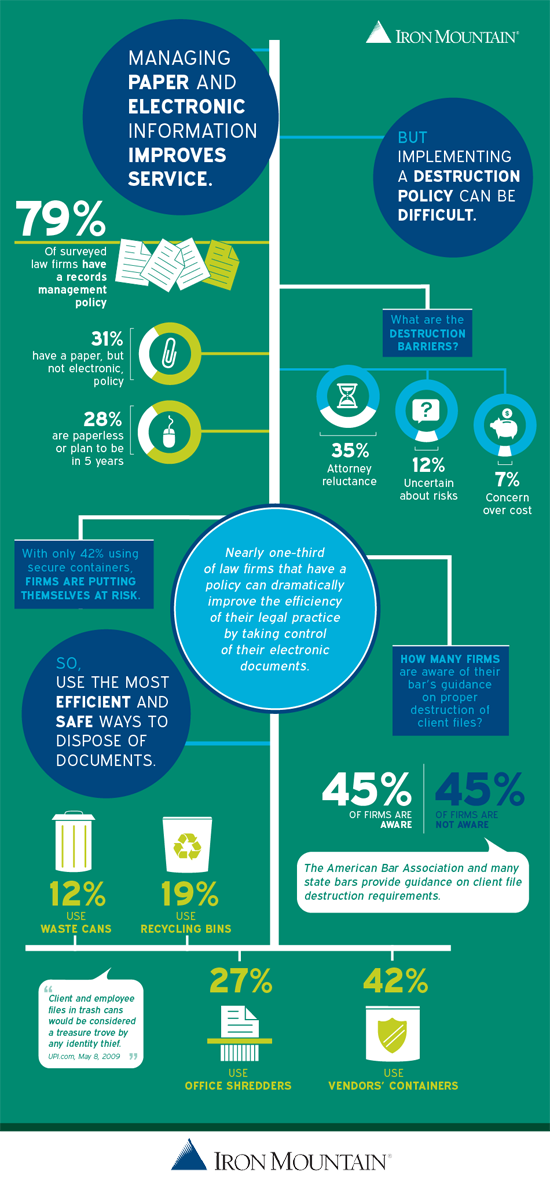|
|
|||||||
One of the leading document and file management companies serving the legal profession did a recent study showing that 28 percent of law firms surveyed either are paperless or plan to be within five years. That, of course, leaves nearly three-quarters of firms still very much needing to tame the paper file beast. Many of these firms are small – according to the American Bar Association, 49 percent of U.S. lawyers are solo practitioners, and 76 percent of law firms have five or fewer lawyers – and often make little or infrequent investment in technology. Is it feasible for them to embrace paperless operation?
The simple fact is that it is now a professional obligation for lawyers and firms to keep up with technology trends. This past summer the ABA's House of Delegates approved a new commentary on Rule of Professional Conduct 1.1, which defines professional competence. It now states that "to maintain the requisite knowledge and skill" a lawyer "should keep abreast of changes in the law and its practice, including the benefits and risks associated with relevant technology ..." Lawyers with obsolete file management technology should beware.
Electronic technology is definitely the lawyer's ally in taming the records beast and striving toward paperless operation. From scanning of paper files, to storing electronic records in a remote "cloud" location, computers have made the issue of records retention more manageable – yet at the same time more complex. Particularly in terms of record safeguarding, law firms must be alert to the perils as well as the promise that electronic technology brings to record management and retention. For example, the ABA also added to Rule 1.6, on Confidentiality, a new subparagraph (c) requiring a lawyer to "make reasonable efforts to prevent the inadvertent or unauthorized disclosure of, or unauthorized access to, information relating to the representation of a client" – including electronic information. And a new Rule 4.4 comment states that document confidentiality applies also "to a document or electronically stored information is accidentally included with information that was intentionally transmitted."
That is why scanning is such a valuable tool in moving toward paperless operation. A scanned file is a secure file that cannot be altered, which is essential to the duty of preserving files. That is a big reason why the ABA in 2010 made a major change in Rule 1.15 so that lawyers can now use scanned electronic images of checks as an alternative to pre-numbered canceled paper checks for client trust accounts. The revised rule also allows a lawyer or firm to maintain trust account records in electronic or photographic formats if they are readily accessible, can be printed upon request, and preserve full client confidentiality – all primary features of scanned files. And of course any scanned fines are searchable, and greatly reduce the inconvenience and expense of paper document storage.
Taken together, such changes in the Model Rules affirm that the world of the law is more than ever the world of technology for handling file management. Not every law office will be completely paperless, but the technological and ethical momentum is in that direction.

© 2025 Edward Poll & Associates, Inc. All rights reserved.